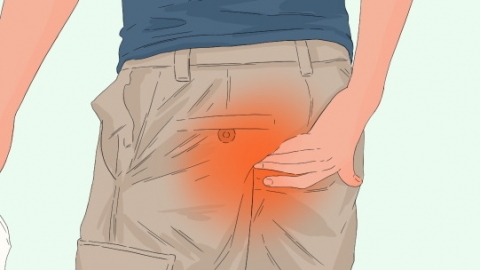How to diagnose hemorrhoids
Diagnosis of hemorrhoids is primarily based on typical symptoms related to the anus and defecation. The core symptoms include rectal bleeding, anal pain, protrusion of tissue, local itching, and abnormal bowel movements. These symptoms' specific characteristics allow for preliminary identification, with slight variations in symptom emphasis among different types of hemorrhoids. Detailed analysis is as follows:

1. Rectal bleeding: This is the most common symptom of hemorrhoids, typically presenting as bright red blood dripping during or after bowel movements. The blood does not mix with stool and is usually painless. Internal hemorrhoids are more likely to cause this symptom, which may initially occur only occasionally after constipation or consuming spicy foods.
2. Anal pain: Pain is often associated with external hemorrhoids or prolapsed and incarcerated internal hemorrhoids. When an external hemorrhoid becomes inflamed or develops a thrombosis, there is noticeable swelling and pain at the anal margin, which worsens upon touch or walking. If a prolapsed internal hemorrhoid cannot be reduced promptly, it obstructs local blood circulation, causing severe pain along with a sensation of anal heaviness or fullness.
3. Protrusion of anal mass: A soft mass protruding from the anus during defecation is a classic sign of internal hemorrhoids progressing to an advanced stage. Initially, the mass may spontaneously retract after bowel movement; as the condition worsens, manual reduction becomes necessary. In severe cases, the mass may prolapse even during walking or coughing and becomes difficult to push back.
4. Anal itching: Hemorrhoids can increase secretions around the anal skin, irritating the area and causing itching. Patients often scratch unconsciously, damaging the skin barrier and worsening discomfort, creating a vicious cycle of "itching-scratching-skin damage," which may lead to perianal dermatitis in severe cases.
5. Abnormal bowel habits: Some patients may suppress the urge to defecate due to fear of pain or bleeding during bowel movements, leading to prolonged stool retention in the intestine, excessive water absorption, and subsequent constipation. Additionally, irritation from hemorrhoids may affect the anal sphincter, causing a sensation of incomplete evacuation—frequent urges to defecate without successful passage of stool.
In daily life, maintaining regular bowel habits, avoiding prolonged toilet sitting, increasing dietary fiber intake, and drinking plenty of water to soften stools are essential. If any of the above symptoms occur, lifestyle adjustments should be made promptly—avoid prolonged sitting, staying up late, and consuming spicy foods. Warm sitz baths and similar measures can help relieve local discomfort and maintain anal health.





